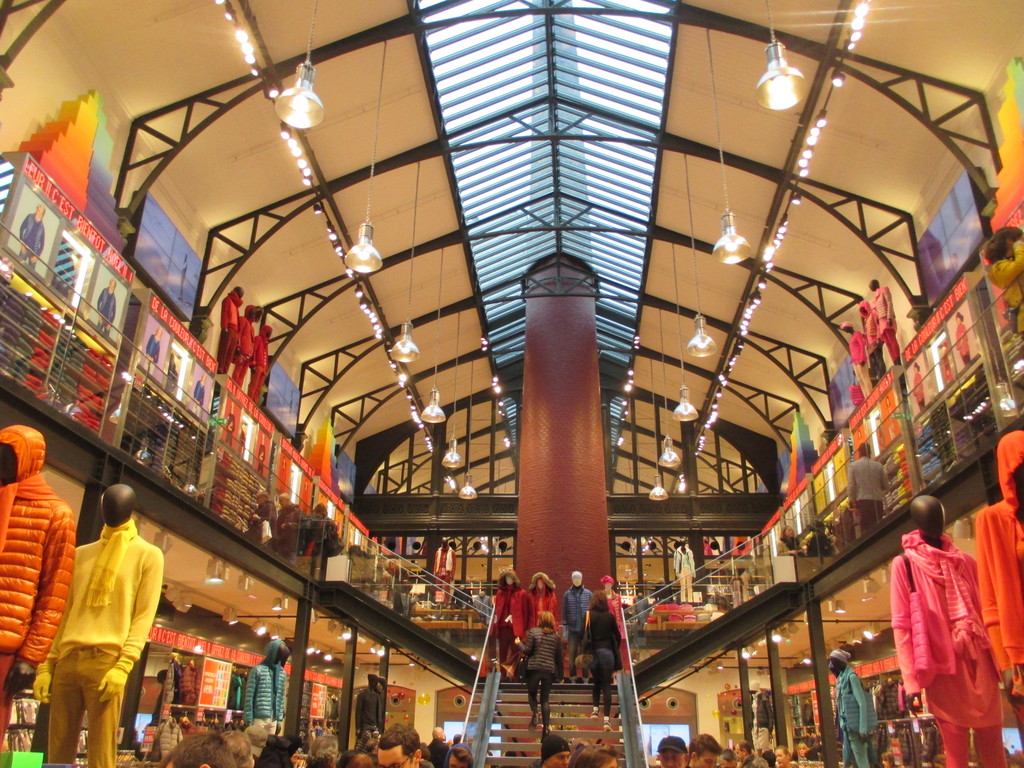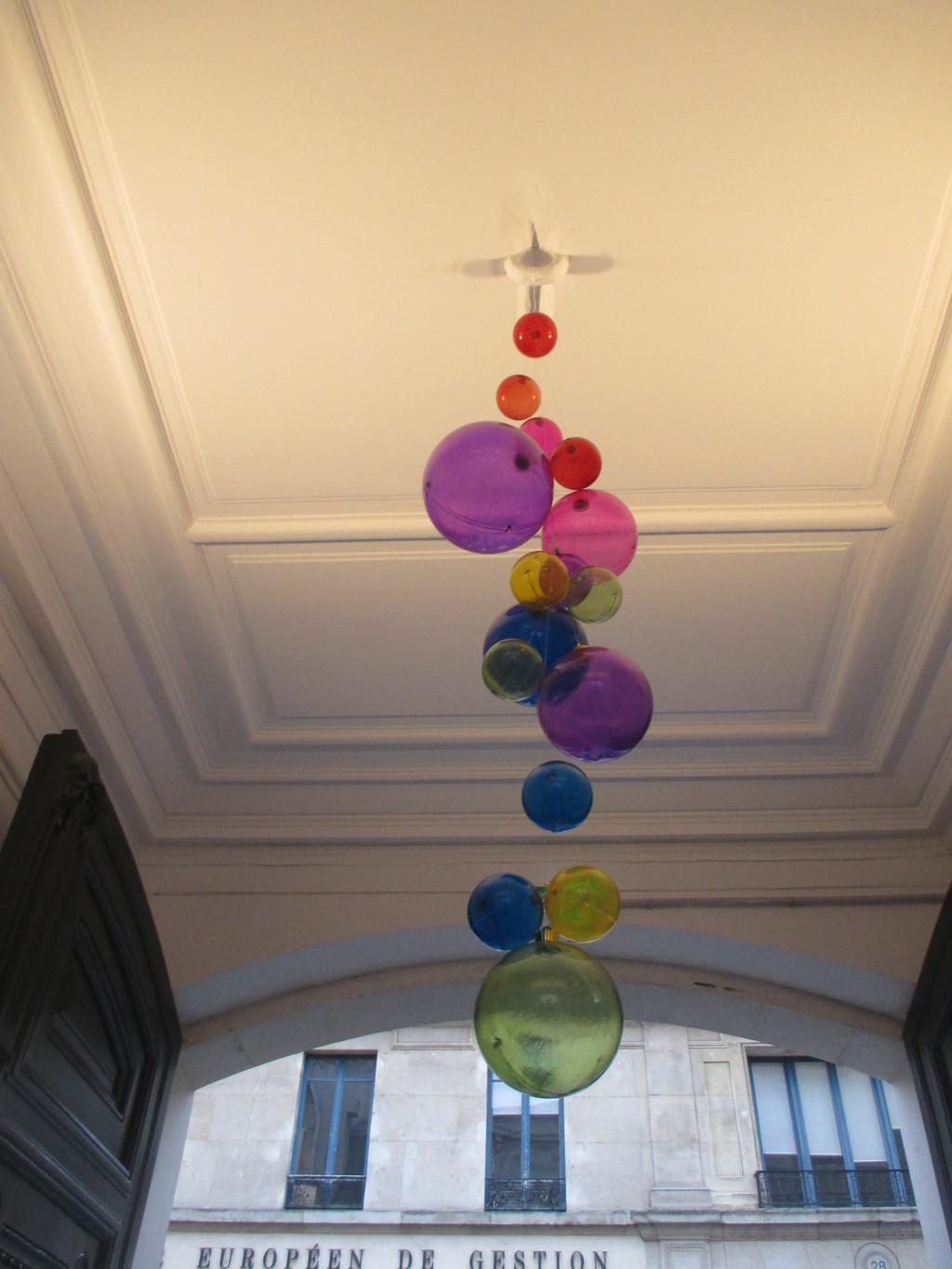Le Marais
By Patrick Belioux for The Paris Times
Known since medieval times as "The Swamp", Le Marais boasts a wealth of architectural styles. Focusing on less famous buildings, Patrick Belioux guides us through its history in chronological order and helps us to learn more about these stunning façades.
During the Middle Ages, Paris was divided into many small different areas, narrow houses built closely next to each other. Le Marais, or literally, El Pantano, which has retained its name to this day and now includes the third and fourth arrondissements, was once covered with small irrigated fields which was the main source of vegetables for the city. In the 16th century, when the nobles and burghers were looking for land large enough to build their homes, they found this part of the city, which was not yet developed. Through the 18th century, they built some magnificent hotels and large family houses - many of which resembled genuine palaces.
Thus, over the centuries, Le Marais gradually became one of the richest architectural areas in Paris. Today, a bounty of designer shops, fascinating museums, a vibrant gay district, and the old Jewish neighbourhood reside in Le Marais with its wonderful architectural history as a backdrop. Although the access to notable hotels is often private, it is still possible to explore this architectural wonder and learn all about the different styles it offers.
Beginning the chronological journey on Rue François Miron (No. 13/11) and in the corner of the Rue des Barres and Rue du Grenier-sur-l'Eau (literally "the breadbasket of water"), are three typical medieval houses, the last one erected in 1327.
These gabled houses are narrow, with only two windows per floor. Their sides protrude from corbelling and their triangular façades are covered with high sloping ceilings that allow rainwater to drip down the sides of buildings. These houses are easily recognisable thanks to their half-timber decoration, which were discovered relatively recently, during restoration work in the 1960s.
In fact, in 1607, Henry IV (1589-1610) would build houses with wood then cover it with plaster, as a means of fire prevention.
Continuing along Rue Saint Antoine, you can still see several small buildings which have these particular façades and gables of two windows, where they have been rebuilt or transformed into their original narrow plots.
Although it was built quite late compared to other buildings in Le Marais (1624), the impressive Hôtel de Sully on 62 Rue Saint Antoine provides a striking example of the Renaissance style, with a number of exquisite ornaments.
Visitors have to enter the courtyard to admire its bas-reliefs, then cross the second, larger courtyard and finally follow the small hallway on the right that leads directly to the Place des Vosges.
Place des Vosges is the first major architectural ensemble of Paris. Originally known as Place Royale, Enrique IV ordered its construction in 1605 (Other places known as the Place of Victories or Place Vendôme were built much later under Louis XIV's reign (1643 -1715) and the Place de la Concorde, in the 18th century). Compared to its neighbour, the Hotel de Sully, Place des Vosges has three stories, sloping French slate roofs, and red brick façades (sometimes painted with stucco to imitate a brick façade). The corners are built in the same white stone that frames the windows.
These architectural features are typical of the early 17th century. They can also be been seen in the Place Dauphine on the Ile de la Cité and in some houses on Rue François Miron (No. 44 and 46), which were built in 1585. Another good example is the Hotel Mayenne (1606 ) located at 21 Rue Saint Antoine, which is a perfect example of Le Marais architecture before it was all restored.
Rue Francois Miron is, in fact, a museum itself of various architectural styles from Paris. The architecture you can see on Hôtel Beauvais, at No. 68, dates back to the youth of Louis XIV (1655).
Its courtyard is even more spectacular than its street façade and it was decorated in the style of an elegant theatre. It perfectly illustrates the typical French style during the Baroque era.
At No. 82, the Hôtel Hénault de Cantobre, another beautiful façade from Louis XIV's era (1704) looks somewhat lifeless next to its adjacent buildings.
Turning onto Rue de Fourcy, you can admire the back of this monumental building, which now houses the Maison Europeenne de la Photographie. It was at this time that a new style was born: the top of the windows are not straight anymore, but they curve slightly.
From the straight lines coined by Louis XIV, curves and asymmetric fancies became popular under the new King Louis XV (1715-1774).
Back on Rue François Miron close to where we started, the large group of buildings between No. 2 and No. 14 dates from 1734. From the boutiques on the ground floor, the building façades appear rather simple from a street level. However, various elements and styles of the buildings are quite typical of Louis XV: above the door at No. 2, for example, is the head of an old man (an allegory of Time). The windows are also arched, and wrought iron balconies on the first floor look quite mysterious and gloomy, echoing the style of an old elm in a nearby square.
The building on the corner of Rue des Barres, 14 and Rue François Miron, is even more spectacular. Further up the street, at No. 42, is a house dating from 1742 which has a beautiful wrought iron balcony and Hercules' head positioned on top of the small arc.
There is a similar Hercules sculpture at 12 Rue de Jouy on a building built in 1743. The ornamental brackets of the doorpost are pretty and asymmetrical, a design of the typical Rocco style which flourished under Louis XV.
The Hotel du Grand Veneur (meaning the person responsible for royal hunting), at 60 Rue de Turenne, which comically, is in fact a showroom for furniture and plumbing fixtures: pretending to look for a bath, visitors they can get to the top of the building by using the wonderful staircase of wrought iron railing, decorated with hunting themes. Go around the block to Rue Villehardouin, then Rue de Hesse to be amused by its façade... a boar's head.
The exuberant decorative styles that flourished under the "Beloved King" (Louis XV) disappeared under the reign of Louis XVI (1774-1789).
Louis XVI, architecture became serious and modest again, similar to Louis XIV's style, but a little heavier and more exaggerated.
L'hôtel Le Mäyrät (1767), at 26, Rue des Francs-Bourgeois, is a good example of this neoclassical style.
Strolling through Le Marais is more than just putting one foot in front of the other and appreciating the aesthetics of the neighbourhood along the way. Le Marais is a miracle in itself that still exists today thanks to a very influential Frenchman - since until at least 1962, it was a poor neighbourhood left to waste away. André Malraux, Minister of Culture of De Gaulle, was responsible for the passage of a bill in August that year and was put in charge of reserving and protecting certain historical areas and ancient centres of cities threatened by property development. Today, Le Marais is one of the most elegant neighbourhoods of Paris, where house prices continue to rise substantially.
No matter what turn is taken, whether you stumble upon a courtyard, a certain hotel etc. there is a sense of something more profound, such as the many residents that proudly live in the neighbourhood the Marais. I personally hope to be one of them, as a lot of people live and work here. The more I see, the more attached I become to their little idiosyncrasies and distinctive personalities.
About ten centuries ago, swamps (Marais) were drained by religious communities and, later, by royal deed of Louis VII, Le Marais became the "kitchen" of Paris, where fresh produce was grown and sold. In the 14th-century, royal homes started to be built there and the where the first paved street was created, "Rue Pavée. " In the 16th-century, streets were laid in order to cross the fields more easily: Rue des Francs-Bourgeois, Sainte Catherine (Sévigné) and Payenne. The 17th-century is considered a Golden Age for the Marais when Henri IV, the first of the French town planners constructed the Place des Vosges. Between the 18th and 19th-centuries, the Marais was sadly neglected and in the 20th-century, it was planned to raze all the center of the Right Bank and to widen rue de Rivoli. It wasn't until the classified Hôtel de Vigny on Rue Parc-Royal was due to be demolished that immediate intervention was necessary. The movement and creation of the "Association pour la Sauvegarde et la Mise en Valeur du Paris Historique" encouraged Malraux to create a petition to save Le Marais from destruction.
Le Marais runs across both the third and fourth arrondissements of Paris, the third is the Northern part of the quarter which borders on Rue des Francs-Bourgeois in the south, in the west is the Boulevard Sebastopol, Boulevard St.
Martin is in the north and includes the avenues of the temple, Filles du Calvaire and Beaumarchais in the east. I live in the north, in a neighbourhood called "Temple". Historically, it was once a state within a state owned by the powerful Knights Templar, founded in the Holy Land to protect the pilgrims.
It is here where you can begin to explore the area I consider to be the most fascinating in the whole of Paris. For a very deep historical account of the Marais and all other districts of Paris, I recommend buying Thirza Vallois' Around Paris (Volumes 1, 2 and 3). But if not, my guide is sufficient to follow the lives and history of the quarter.
Begin at Place de la République and walk down Rue du Temple, turning left onto Rue du Petit-Thouars. This lovely tree-lined street leads to the Carreau du Temple, an iron structure which was once a marketplace and is currently under renovation for "Un Espace Pour Tous" as was voted by its inhabitants, the first vote of its kind in Paris. Turn right on Rue Eugène Spuller to visit the Mairie du Troisième (Town hall of the 3rd arrondissment) and Square du Temple, one of Paris' prettiest parks. Continue to the corner of Rue de Bretagne, the 3rd's main shopping street. Just there across from the Mairie at number 47 is Chez Omar, one of the neighborhood's most popular restaurants, famous for its excellent couscous and an incomparable ambiance, thanks to Omar and his jovial personality. Turn left and continue down Rue de Bretagne until you arrive at an crossroads where several streets meet: Rue Vieille du Temple, Rue de Turenne, Rue Froissart and Rue des Filles du Calvaire, don't hesitate to take a left down any of the narrow streets that cross here including: Rue de Picardie, Rue Charlot, Rue de Saintonge and Rue Debelleyme. These streets are mostly residential with a variety of uzines (factories), grossistes (wholesalers), art galleries, boutiques and craftsmen on the street level. Many of these maisons (houses) are 17th-century and 18th-century, with a smattering of pierre-de-taille (cut stone) 19th/20th-century buildings, too.
While Rue Vieille du Temple is one of my favourite streets to walk down, I'll take you right on Rue de Turenne instead, heading south straight for the Place des Vosges, a few steps to the left from the corner of Rue des Francs-Bourgeois. It's not only Paris' most elegant square, but it is the city's most expensive address. Walk under the arches, admire the shops, visit the House of Victor Hugo (number 6), have lunch, and stroll across the magnificent courtyard of the Hotel Sully. It is impossible not to be enchanted.
Following the direction of Rue des Haudriettes, where the museums are, head west to the Rue du Temple. If you turn left, you will find the Museum of Art and History of Judaism in the Hotel de Saint-Aignan, at number 71, and if you turn right, and then quickly left on Rue de Montmorency, you will find a fifteenth century house at number 51 (built in 1407). Designed by the legendary French alchemist Nicolas Flamel, it is now is a good restaurant.
Circle the block to the parallel street, Rue Chapon, behind the Flamel house to discover Passage des Gravilliers and take it until you reach Rue des Gravilliers, a narrow street bustling with wholesalers. Just in front of you at the corner of Rue des Vertus, a pedestrian street, is a 16th-century house with the classic angle of side walls, that start wide at the ground floor and become more narrow further up the floors you go.
Rue des Vertus will take you north to Rues au Maire and Volta. These two streets constitute a small "China Town" lined with Chinese restaurants, markets and merchants. At 5 Rue Volta is a Tudor house rivalling the age of the Flamel house, no one knows which is actually the oldest. A "Soupe Pho" restaurant is located on the street level space, and is supposed to be quite good, but my favourite Chinese restaurant there is Chez Shen at 49 rue Volta.
Chez Shen is just at the start of Rue Beaubourg and the Conservatoire des Arts et Metiers at 60 Rue Reaumur / 292 Rue Saint-Martin.
Behind the museum, take Rue Vertbois east to pass one of the best, funkiest (too old world to be true! ) and most expensive restaurants in Paris: Chez l'Ami Louis, at number 32. Past the next corner take Rue Volta to the left and up the stairs through the Pont aux Biches passage to Rue Meslay, the longest street in Paris with the most shoe shops. Turn right to get back on the Place de la République.
Of course, there are dozens of other streets and hundreds of other places to discover along the way, if you have the time and the means to leave no stone unturned. Therefore, if you want, spend all the time you can exploring a new square, a museum, reading a historical plaque or buying souvenirs in one of the many shops.
At the same time, open your heart to the hundreds of thousands of people who have experienced Le Marais before, who have either lived there or just spent a brief time there.
I promise, you will never forget it, even long after you've left.
Rue Charlot is one of the most attractive streets, with its creative and elegant designer boutiques.
Content available in other languages
- Español: Le Marais
A bustling area
Le Marais is a bustling commercial area in the city centre, just beside the metro station ‘Saint Paul’ on line 1.
Le Marais doesn’t look like other commercial areas because it looks old. It is full of old buildings - actually it is a mixture of Renaissance style buildings and Gothic buildings. For example, look at this Gothic gate:
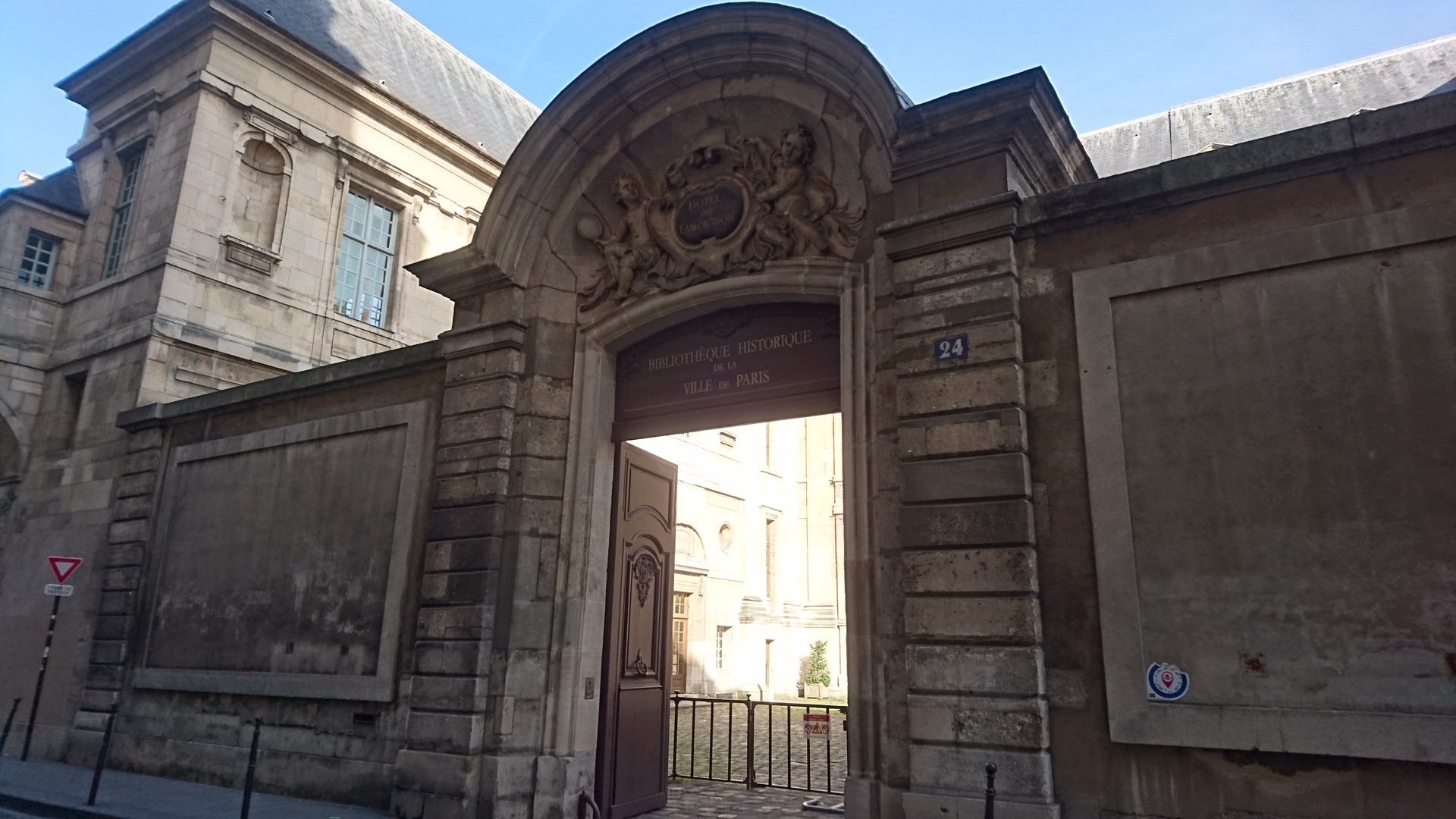
This place in the photo above is the historic library of Paris. Not only the gate but also the court and the buildings are Gothic. It's not open to the public.
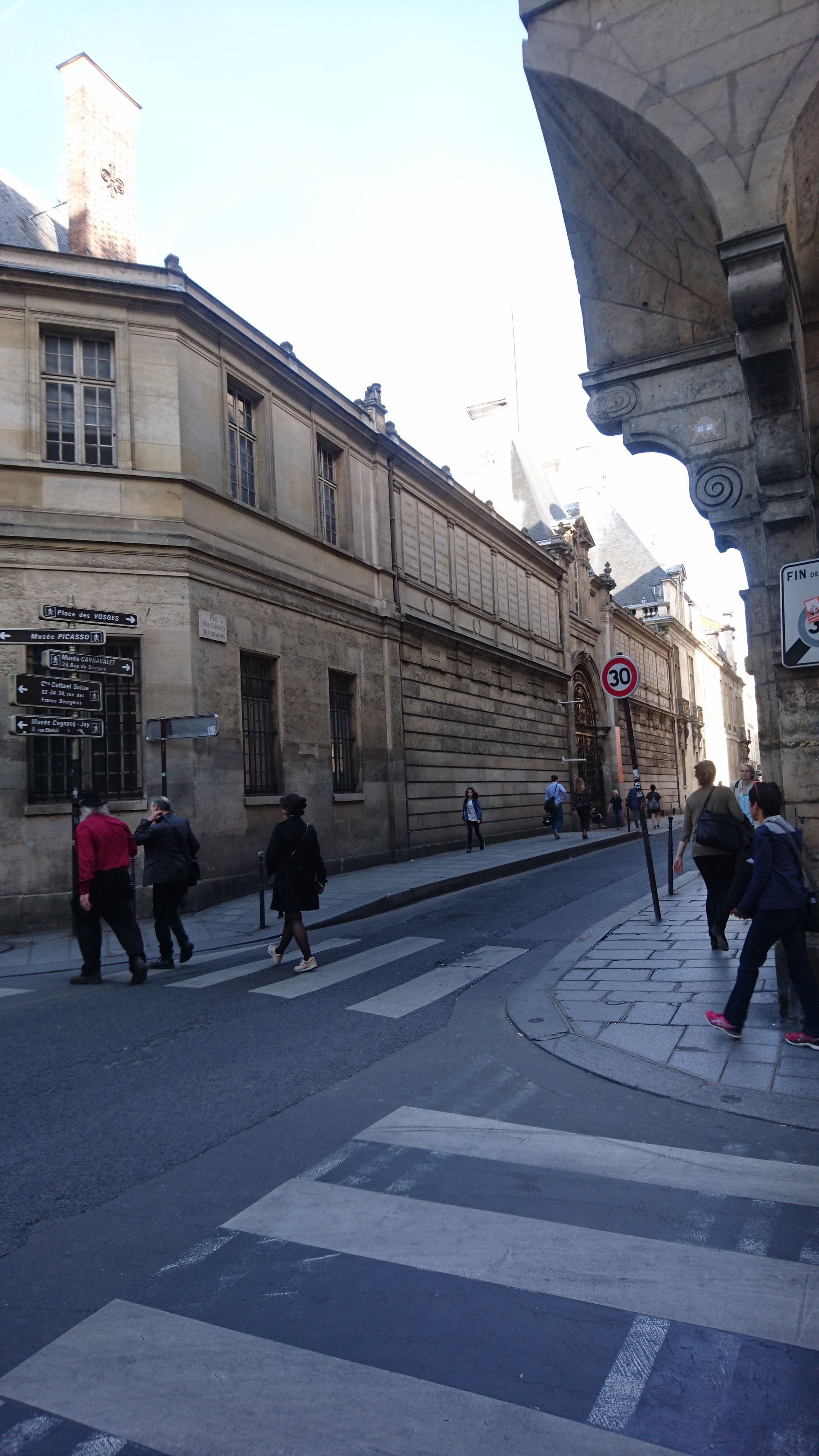
The alley in the picture above looks Gothic, too. 'Musee Carnavalet' is over there.
Whilst Le Marais looks old and traditional in some way, it looks fashionable and cool in another way. This area is full of small fashion shops. There are many popular brands like Uniqlo, Muji, Pandora, L'Occitane and Eric Bompard, which can be seen anywhere in Paris, and also many designer boutiques that can not be found anywhere else.
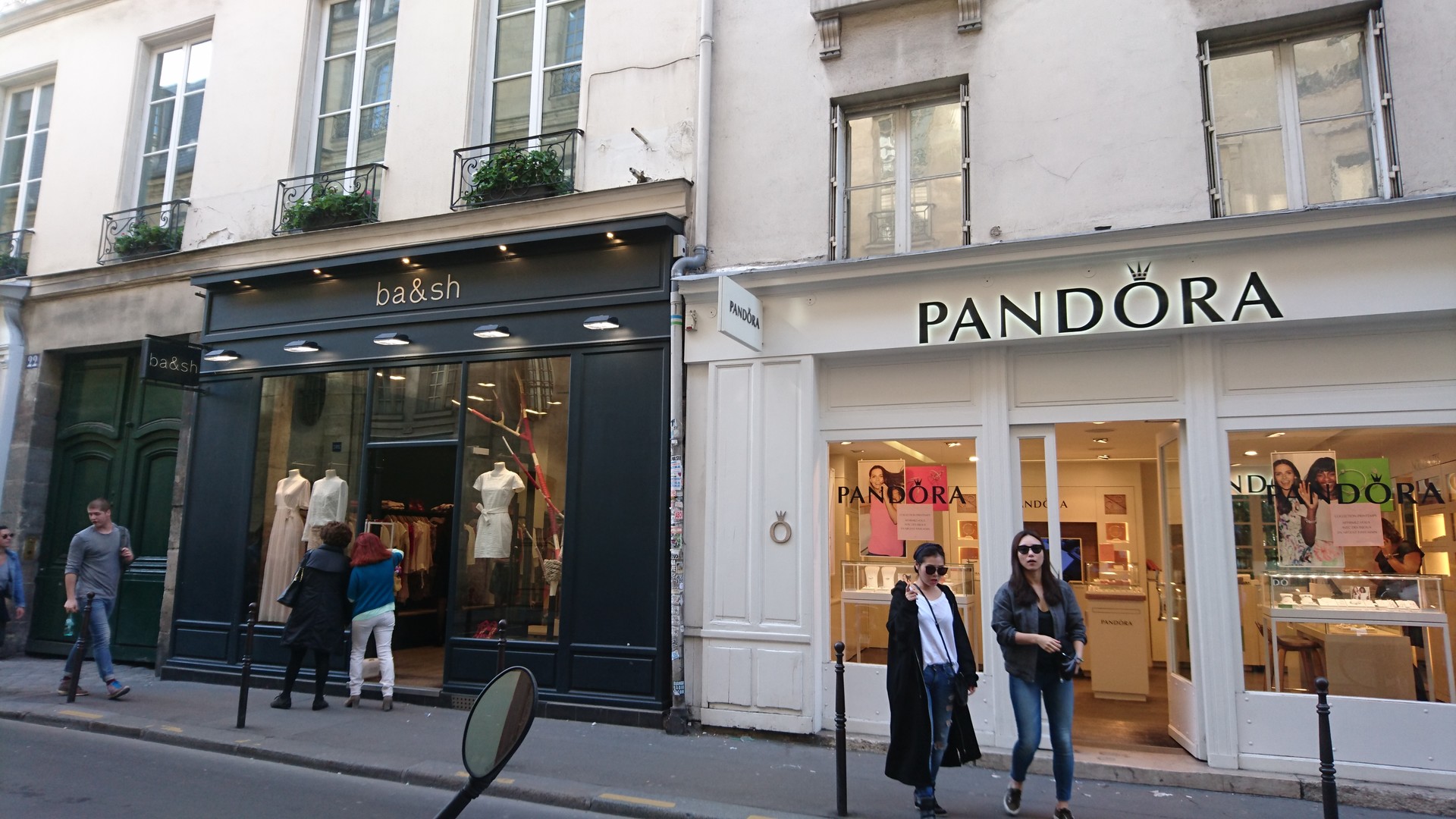
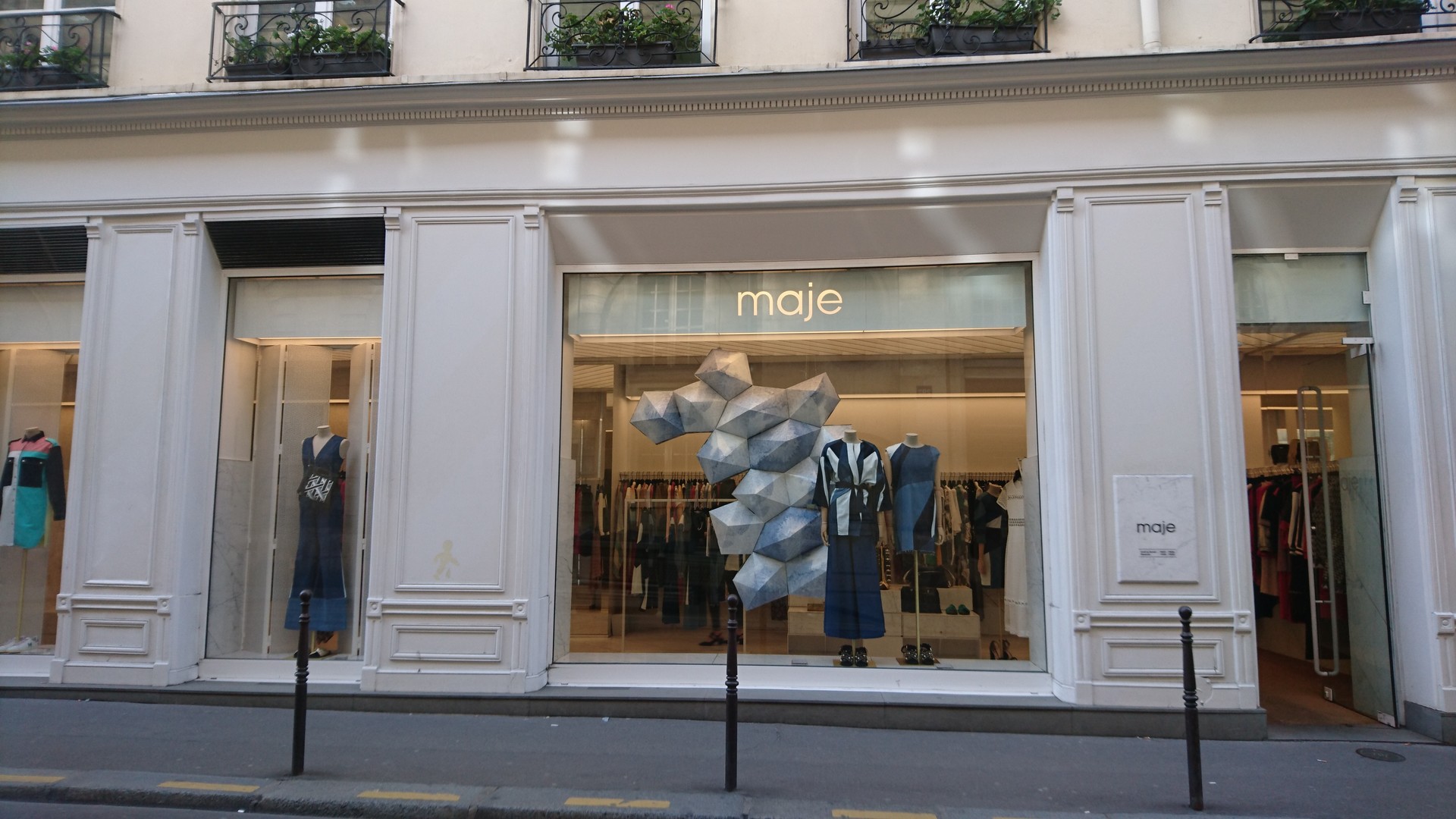

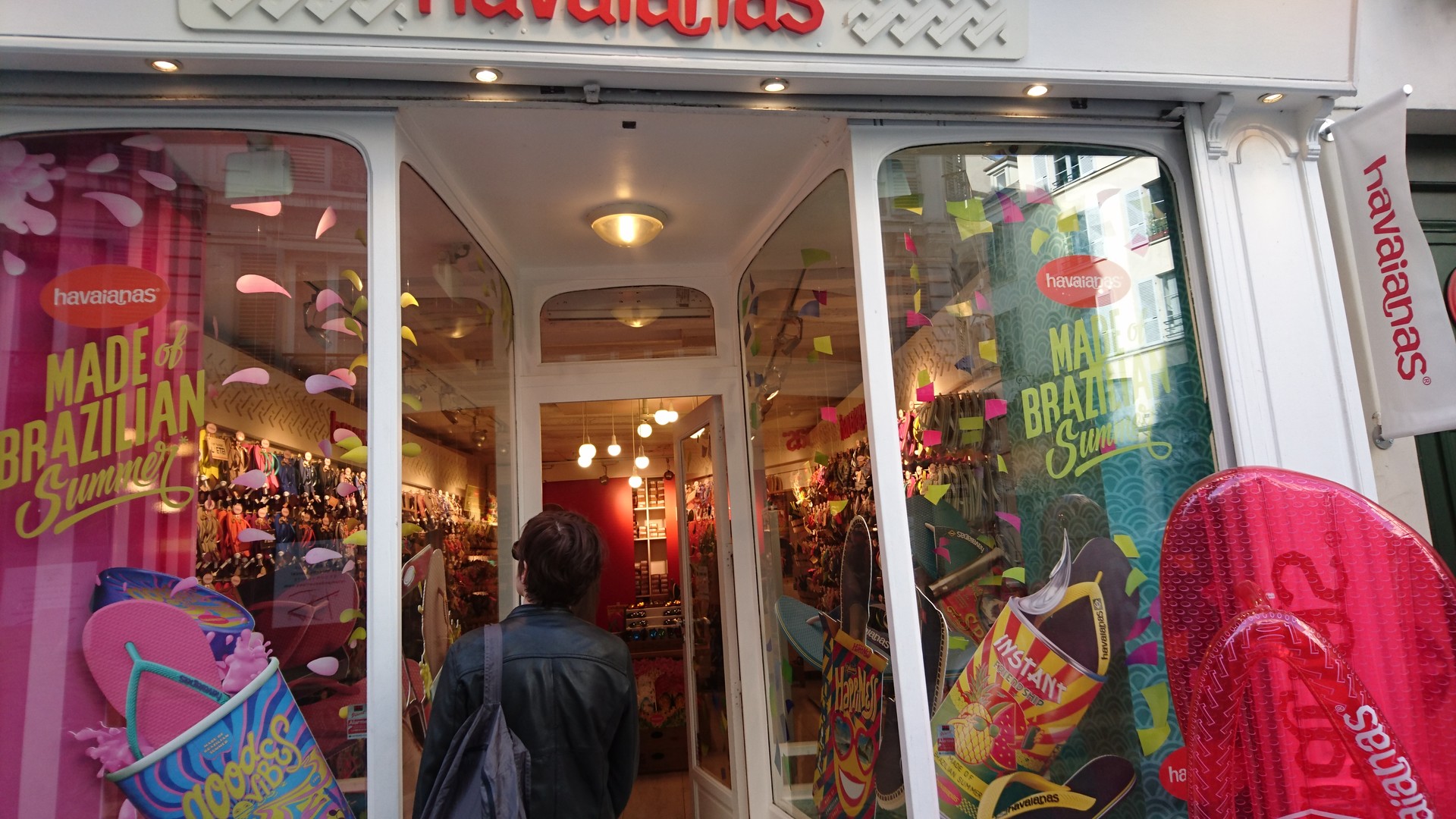
For foodies, Le Marais is also a great place: there are small restaurants, cafes, food stalls, bakeries, and tea shops in Le Marais, many of which look as fashionable as fashion boutiques.
Good news for falafel lovers: I've noticed that there are at least five falafel shops in Le Marais.

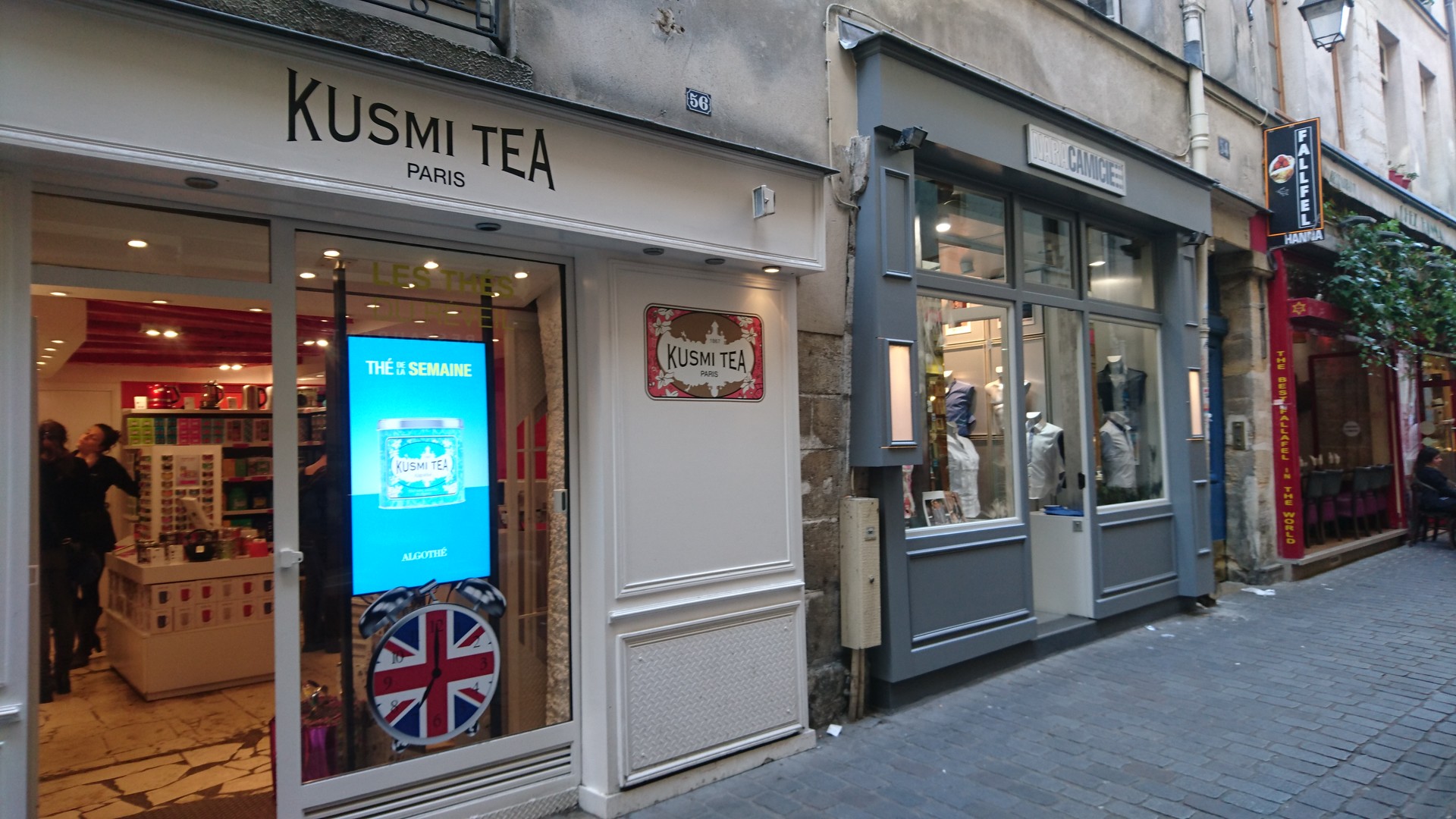
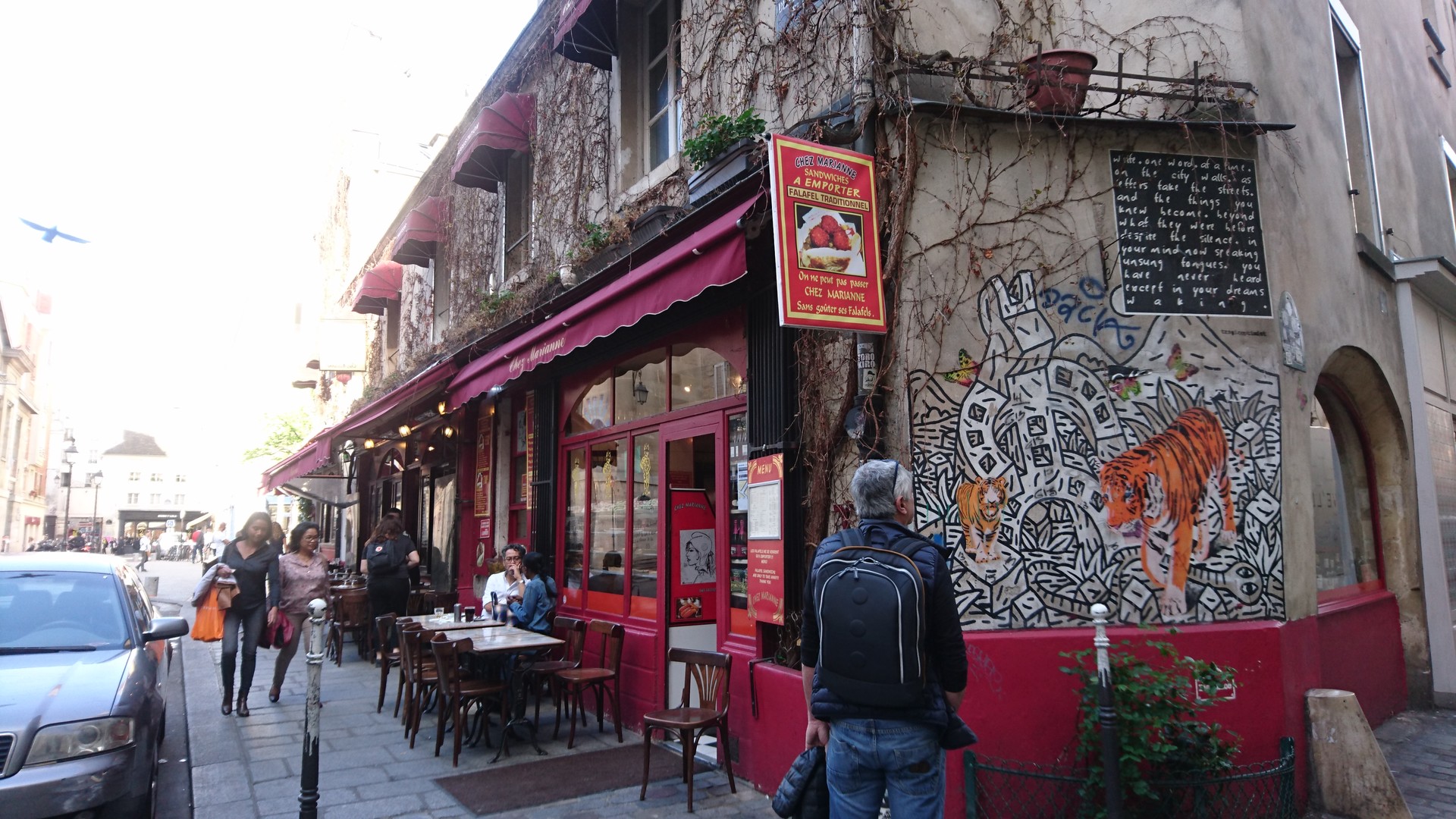

Photo gallery
Content available in other languages
- Français: Zone animée
- Español: Un lugar bullicioso
Rate and comment about this place!
Do you know Le Marais? Share your opinion about this place.


